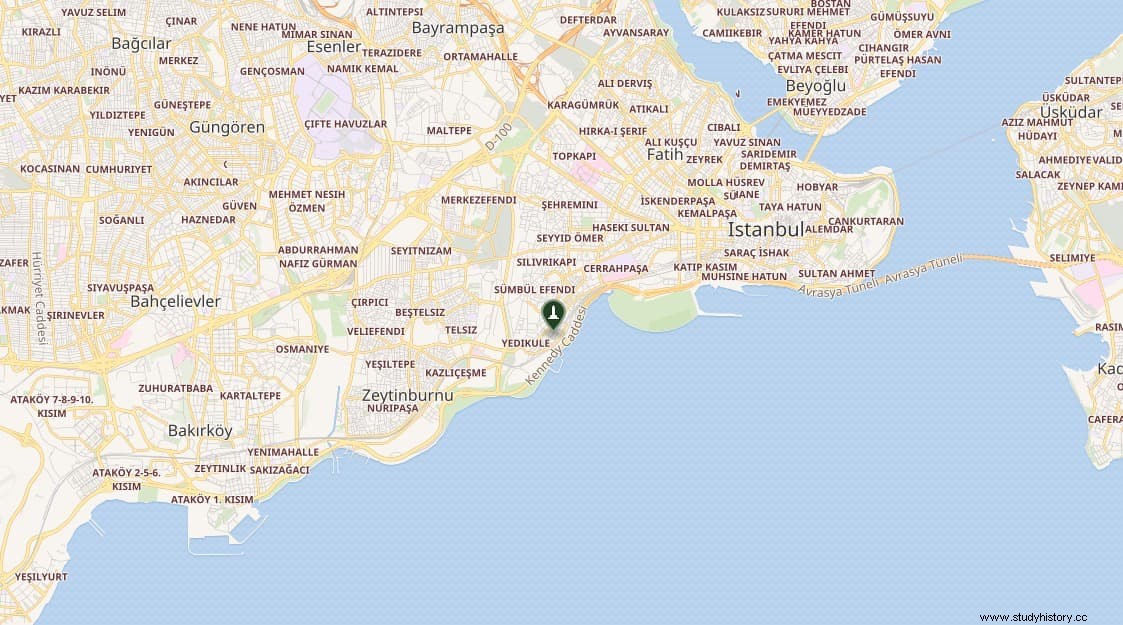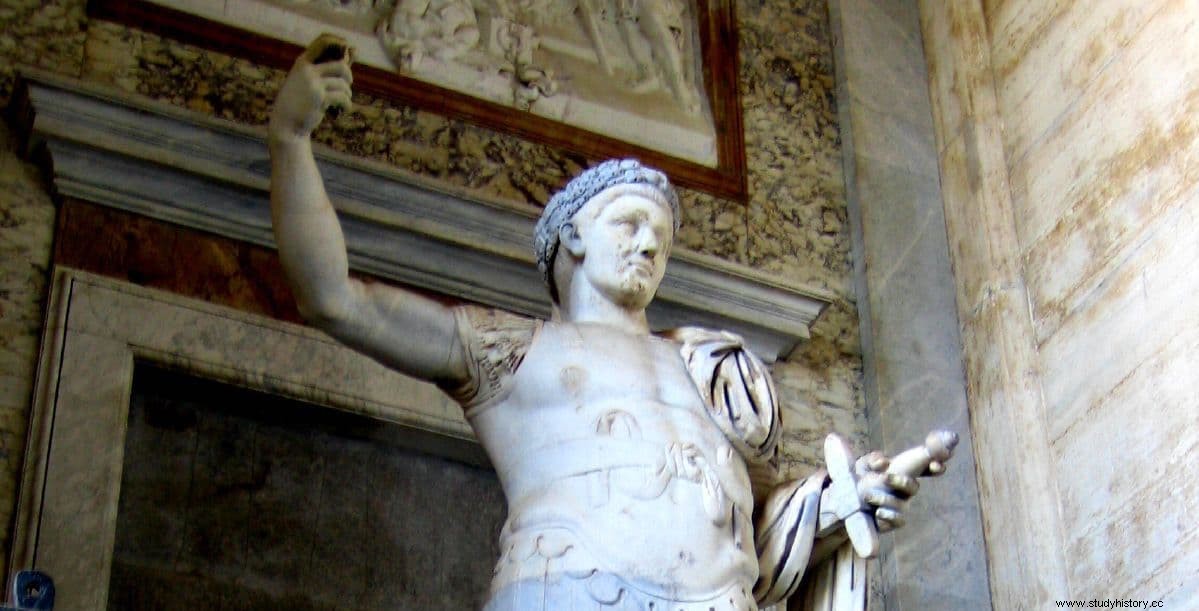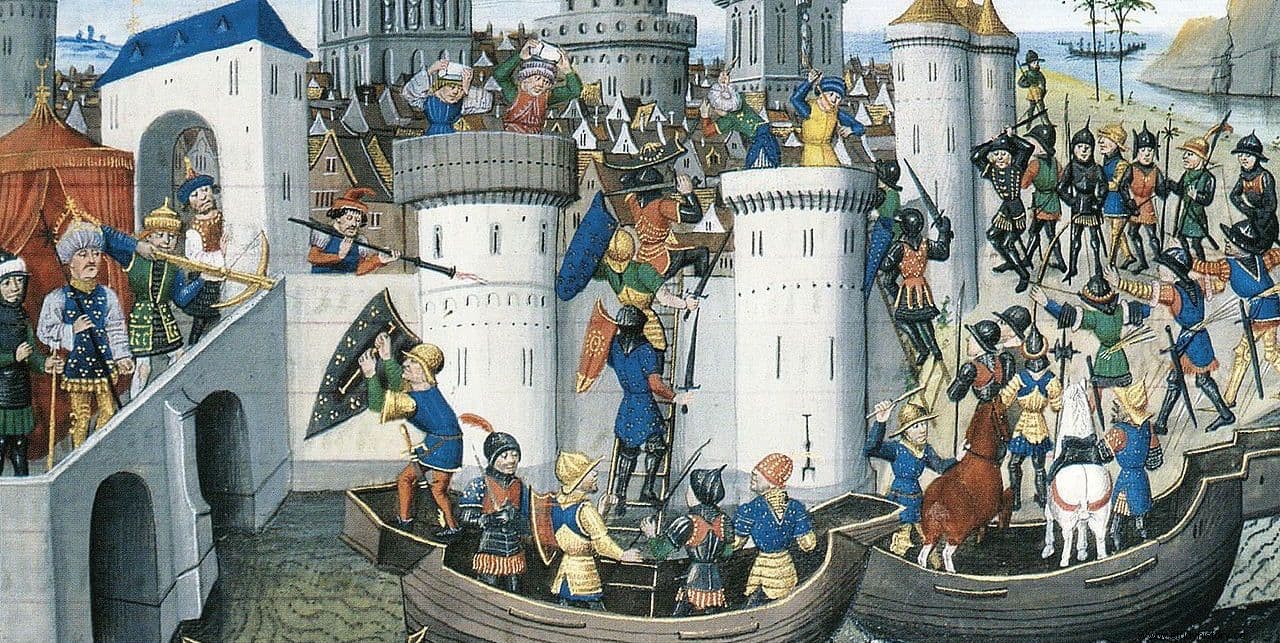Both in the Middle and Near East, Mesopotamia, China, Anatolia and the Greco-Roman world, there were great archives and libraries that have disappeared today. The last of all those great libraries was the Imperial Library in Constantinople.
It was founded by Constantine the Great sometime between 330 and 336 AD. However, its growth was slow, and at the death of the emperor it only had 7,000 volumes.
It would be Emperor Constantius II, who reigned between 337 and 361 AD. who gave the biggest boost to him by creating a scriptorium to copy and preserve Greek and Roman works by transferring them from the original papyri, already badly damaged, to parchment. At the time of Emperor Valens, around 372 AD, this work was carried out by four Greek and three Latin calligraphers.

At the head was Themistio, a pagan philosopher who reached several prominent positions in the empire. He was made a senator in 355 AD, a proconsul in 358 AD. and prefect of Constantinople in 383 AD. He was in charge of starting up the library, which he directed under different emperors, until the time of Theodosius I.
It was possibly he who established the system that prioritized some texts over others, giving preference to the oldest Greek works over the Latin ones. Authors like Homer or Sophocles were chosen ahead of others whose works were not as widely used or known. It is estimated that in the time of Theodosius II (401-450 AD) the library housed some 100,000 volumes.

It is known that Charlemagne obtained copies of books from the Imperial Library for his palace at Aachen. And that both the Armenian monasteries and the schools of the Muslim world, although enemies of Constantinople for many centuries, asked for and obtained loans of books to copy.
The Library sent copies of volumes to all parts of the known world. An 11th-century Sicilian monastery, for example, kept copies of Greek authors virtually unknown in the rest of Europe at the time.
Over the centuries it suffered several fires that reduced its collection. The first that is known happened in the year 473 AD. and meant the loss of many volumes.

After the capture of Constantinople by the Crusaders in 1204, all traces of the library are lost. It is likely that in one of the three fires that devastated the city during the attack, many manuscripts were affected, as is the fact that the Franks and Venetians, who dedicated themselves to looting the city, took as many as they could.
Emperor Michael Palaiologos reestablished the Imperial Library around 1360 AD. in a wing of the palace, but surely by then the funds were already much less in number than the splendor of the early times.
Manuscripts belonging to the Imperial Library have never been found. Not even in the year 1800, when the Turks allowed access to the Seraglio, supposed repository of the surviving texts after the Ottoman conquest. For this reason, some experts doubt that there was ever an Imperial Library of Constantinople similar to that of Alexandria, concentrated in a single building.

What there is evidence of is the existence of numerous ecclesiastical and monastic libraries, which could house parts of the imperial collection. According to Michael H. Harris, in one form or another the Imperial Library survived until the city's capture by the Ottoman Turks in 1453.
After the disappearance of the Great Library of Alexandria, and those of Pergamon and Antioch, the one in Constantinople preserved Greek and Roman knowledge for more than a thousand years. Most of the classical Greek works that have survived to this day would come from Byzantine copies made in the Imperial Library of Constantinople.
Fonts
History of Libraries of the Western World (Michael H.Harris) / The Libraries of the Byzantine World (Nigel G.Wilson) / Preserving the intellectual heritage (Knut Kleve) / The Imperial Library of Constantinople (Koldo Gondra del Campo) / Wikipedia
